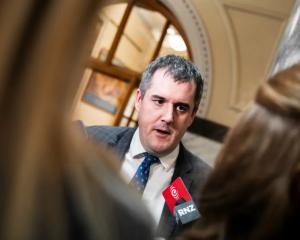New Zealand devotes more of its budget to education than almost all other OECD countries - yet still lags behind in per-student spending, latest figures show.
A new study by the OECD, called Education At A Glance 2015 found that while New Zealand spent a high proportion of both its GDP and total public expenditure on schools and universities, our students still get about $US1000 ($NZ1,523) less each than the OECD average.
For example, while the total public expenditure on primary to tertiary education was 18.4%, compared to the OECD average of 11.6%, primary spending was only $US7069 ($NZ10,771) per child, while the average was $US8247 ($NZ12,563).
The gap reduced at secondary level, where spending of around $US9500 ($NZ14,472) per child was almost on par, but widened again at tertiary level. New Zealand spent $US13,740 ($NZ20,935) per child, while the average was $US15,028 ($NZ22,897).
Government education ministers released a statement last night about the study, welcoming the news that "New Zealand ranks in the top two OECD countries for expenditure on both school and tertiary education as a percentage of total public expenditure".
"The results demonstrate New Zealand's commitment to equipping our students with the skills they need for the 21st century," Tertiary Education, Skills and Employment Minister Steven Joyce said.
TEU national president Sandra Grey this morning accused the government of "cherry picking" to "spin its case".
"We could have done the same thing. For instance, we could highlight the report shows that New Zealand spends over $US1000 per student less on tertiary education than the OECD average and $US3000 less per student on tertiary education than Australia."
Ms Grey said the reality was that the Government was spending $300 million less this year on tertiary education than it did in its first year in office in 2009.
The report also found that:
* New Zealand continues to perform well on ECE indicators - participation, funding and teacher-child ratios are all in the top third of countries and well above OECD averages.
* Enrolment rates for 15 to 19 year-olds are still in the bottom half of OECD countries, but are now closer to the median than they were five years ago.
* Compared with other countries, young New Zealanders are more likely to leave school sooner, and work, or go on to further education, or enter further education when they're older.
* The percentage of young New Zealanders not in employment, education or training (NEET) in 2014 has fallen and is now at 2008 pre-recession levels.
* New Zealand teachers have longer statutory hours than the average statutory hours of their OECD counterparts.
* The proportion of New Zealand adults with a degree or above (at 30%) is just above the OECD average. The proportion with a level 4 qualification or higher (at 52%) is one of the highest.
Speaking about the tertiary participation figures and the lower numbers of NEET students, education minister Hekia Patara said: "These gains show our efforts to deliver a quality education to all New Zealanders are bearing fruit. "I want to thank all our teachers, schools and tertiary institutions for the difference they are making to the future of our young people."












